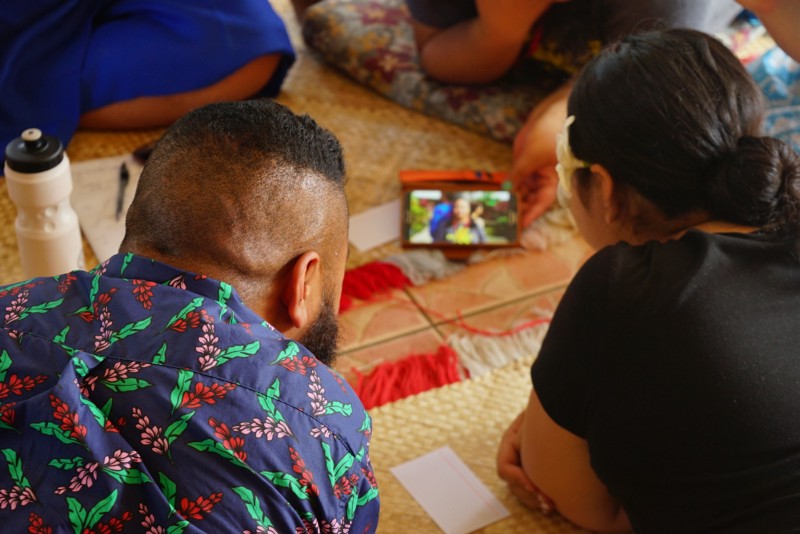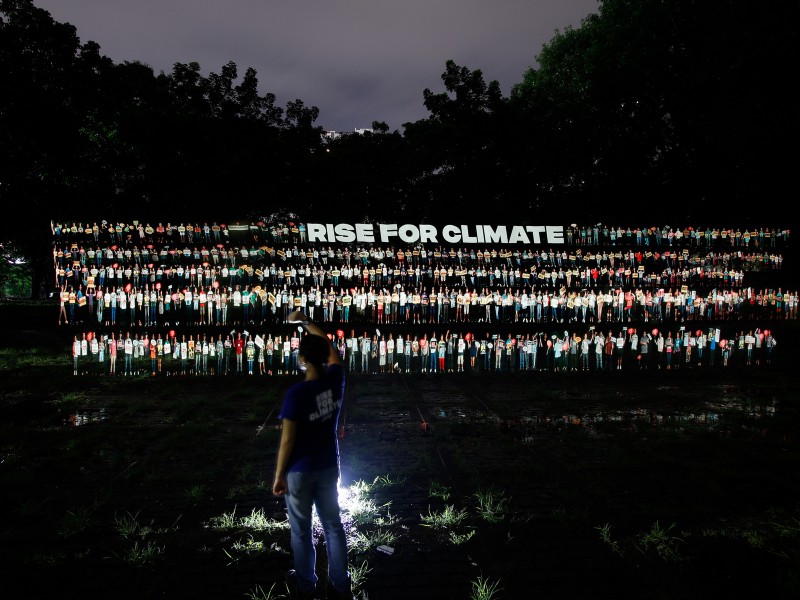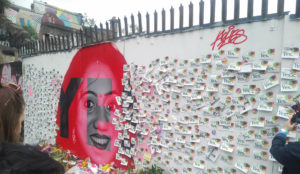Below is an edited version of a piece published on Medium. Read the original here.
It’s a constant struggle for non-profits to ensure that their work gets seen on social media, and 350.org is no exception. Recently, we’ve been testing various ways to better reach and engage our audiences, as well as direct people to action.
350.org’s main social media channels are Facebook, Twitter and to some extent Instagram. We have our primary global accounts, and many of our regional and country teams also manage their own profiles. It’s a pretty wide distributed network, and not all our teams (staff and volunteers) have access to large budgets.
Here are some of the things we’ve learned in our search for solutions and strategies that could be used across the movement.
1. Share the content creation burden
It’s valuable to have a multitude of people help in creating content. Instead of all social media content going through one person or a select group of people, 350.org Pacific has tried to train up all their country coordinators to have some basic digital skills.
Now, their Facebook and Instagram profiles more frequently feature content coming directly from all their teams in the region — mobile phone videos of warriors from Kiribati on a traditional canoe powered by wind, Instagram stories of art builds in Fiji, photo albums of marches in Vanuatu, and more.
And it’s showing some huge results. Since July, they’ve seen a 565% increase in the reach of their Facebook posts, a 316% increase in post engagement, and a 194% increase in page likes.
Having a diverse team feeding content has also worked well for the Canada team. As Katie Rae Perfitt, 350.org Canada Divestment Organiser, said recently, this matters because:
“Each one of us brings our own unique identities and lived experiences to this movement. Where we live, which communities we belong to, our race, gender, motivations for action, our personal style, class background, and other elements of ourselves are pathways for our audience to see themselves in the climate movement and have our message land.”
2. Create a diversity of content
Share livestreams, produced videos, articles, photo albums and more. Host a webinar or live Q&A that provides a space for people to have an in-depth conversation. Do quick updates and analysis. Whatever you do, just mix it up. Give your audience different elements of the stories in a variety of ways.
For example, several months ago in Canada the premier of Alberta province called for a boycott of wine from neighbouring British Columbia because of that province’s pushback on tar sands pipelines. So the 350.org team in Ottawa organised a “buycott,” calling on people to come show their support for British Columbia by buying its wine.
A volunteer helped run a livestream of the action. And then we used an easy tool called Animoto to take snippets of the livestream and turn them into a short video that further explained the action and could be easily shared. It got over 111,000 views:
3. Be authentic
“Authenticity” in social media can mean many different things, but at the end of the day I think it comes down to this: can people see the humanity in your content? As 350.org Pacific Campaigner Joseph Zane Sikulu said:
“In the Pacific authentic content is content centred around our truths. It’s raw and not overly produced. It’s storytelling in its simplest form, just being honest. It works well in the Pacific because people connect and resonate with that. I feel like it’s what our people yearn for and they gravitate towards it.”
While it’s true that the majority of our top-performing Facebook posts is generally related to some extreme weather or other breaking news, a great deal also features authentic, real stories. Sometimes, simple interviews with activists on the ground do really well. This video from the Hambach forest got over 67,000 views (with no paid boosts).
Our highest-performing piece of content from the 2017 United Nations Climate Change Conference was a raw mobile video of Pacific Climate Warriors on the edge of a massive mine in Germany speaking their truths:
Furthermore, it’s good to have visually powerful and well-made content, but you don’t want to go so far that you seem out of touch, just another big INGO trying to spend a budget. Chris Kif, 350.org Africa Digital Campaigner, said:
“The value of visually powerful and well-produced content lies in an openness to the diverse, culturally relative stories and imagery that comes from our global network. The key to effective visual storytelling is strong content — not necessarily ‘high quality content’ always! By sharing inspiring content, we also want to show our audience that they can produce content using what they have. They don’t always have to have the latest video camera to produce content.”
4. Take care of your relationships
You can have the most stunning content in the world, but at the end of the day, relationships matter — especially if you’re trying to build not just a social media following, but a real-world movement. During escalated actions to stop the Kinder Morgan pipeline in Canada, 350.org Canada Digital Campaigner Atiya Jaffar said:
“There is a coalition of orgs and grassroots groups working collaboratively on this project — and the digital organisers from these groups worked very closely. We tried to make it so that we were tagging each other on and off for live streams — which meant we could take rest breaks and days during 8 days of action and also that we weren’t competing for airwaves — when one of us went live we shared it on the other pages immediately to draw a bigger crowd and a few times we actually ended the livestream by letting folks know where they could go next for more coverage.”
Relationships also matter in digital storytelling. At 350.org, we’re committed to doing non-extractive storytelling as much as we can, and that means respecting people’s experiences, feedback and ownership of their stories throughout the whole process. It’s not about grabbing some talking points and racing out, but taking time to build relationships.
Digital storytelling at its heart should be about more than just views, but creating real transformations in people — in both the storyteller and the audience. Never forget that a video isn’t a victory if it damages your relationship with partners and communities (no matter how viral the video goes).
It makes a big difference to work with professional videographers and photographers who already have some frame of reference to the authentic stories you want to tell and have relationships in the movement. Chuck Baclagon, 350.org East Asia Digital Campaigner, said:
“Our goal is to put the audience in the shoes of the people being featured in the video. Only documentarists who are already involved in the local struggle can bring that out, because it exhibits empathy. Their solidarity with their fight sends a message to the communities that we’re not only after getting a good story — we are there for the long haul, and we care as much as them about the outcome of their local campaigns.”
See below a powerful video from the Philippines that serves as an example of working to respect relationships with impacted communities:
5. Find your niche
It’s so important to be aware of the specific role that your organisation or social media channel plays. What can you share and offer that no other group can?
During the past few months as the movement to stop the Kinder Morgan pipeline has peaked, I’ve always known I could go to the 350.org Canada channels to find out the latest news. And I’ve also really appreciated that they didn’t just share their own content, but amplified work from other teams—especially from the indigenous communities leading the campaign.
Their efforts have really paid off. Even though they have under 10,000 Facebook followers, they regularly reach over 100,000 people each week with their content.
6. Prioritize
Not every piece of content that you post on social media should get the same levels of your attention. For high-priority content, make sure you allocate time and resources for production as well as distribution.
When we heard an announcement was coming about Ireland divesting from fossil fuels, we made sure to prepare some content , including this video which had over 767,000 views. We knew it would be great news and we wanted to ensure we got it right.
The Ireland video also worked well because we had built a relationship with digital video news outlet NowThis—another sign that taking time to build relationships and do proper distribution work matters.
7. Keep an eye on hot topics
Social media algorithms still tend to favour content related to hot topics, so it’s useful to keep the latest news on your radar and think about what you can add to those conversations.
However, don’t get too stuck in constant response mode. It’s good to prepare some templates and other plans ahead of time so that your team doesn’t always have to reinvent the wheel.
Recently, a new climate study about the potential for a runaway “hothouse Earth” situation was getting a lot of sensational coverage. We decided to ask our then-Programme Director Payal Parekh to record a short mobile video of herself talking about the study and feelings of despair, but also about why there’s still hope. It was a candid and simple video. We just added some text and released it, and it performed very well (especially given the limited time and budget that was put in):
8. Continue trying new things
Social media algorithms are finicky, so it’s important to keep on testing and learning as you go. Every Monday, you could take time to look back over your past week and reflect on what worked and what didn’t. If you aren’t sure if something will work, just try it and see how it goes. There are some good analytics tools out there (like Tint and Keyhole, amongst others), but you can also just use the analytics tools built into Facebook, Twitter and Instagram.
It’s also important to experiment with new ways of engagement beyond likes and petitions. For example, in the Philippines, 350.org wanted people to be able to safely engage in social action, so they gathered 500 photos from frontline communities, activists, students, artists, churchgoers, and other advocates and then held a virtual march using Pixelsticks.
Want to learn more about 350.org’s social media experimentation? Read the full presentation of their results here. For a list of social media resources and questions for further exploration, see the original piece on Medium.
Top photo: Attendees at the Pacific Climate Warrior Retreat. Courtesy of 350.org. Used with permission.






